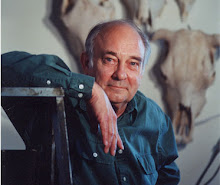
We got an introduction to the classification of periods in art history by playing a game. We worked in pairs with a game board, where a chronology of representative works was arranged around a square. Dick showed works of art on a screen, and each pair had to agree on what period the work was from, then the whole class gave their guesses and we discussed it. After classifying about twenty works, we had a pretty strong "spatial" sense of "where" in time the various periods fall relative to each other, and what some of the general identifying characteristics are.
The chronology starts in the bottom right corner, and moves clockwise. I've followed Dick's labeling in blocking the periods out in the lists below.
- Nature dominated
Paleolithic
Egyptian
Aegean
Greek geometric
Greek archaic
- Man dominated
Greek classic
Greek Hellenistic
Roman
- God dominated
Early Christian / Byzantine
Romanesque
Gothic
Late Gothic
Early Renaissance
- Man dominated
High Renaissance
Mannerism
Baroque
Neo-classic
Romanticism
Realism
Impressionism
Post-impressionism
Fauvism
- Science dominated
Futurism
Cubism
Surrealism
De Stijl
Dada
- Science & technology dominated
Abstract expressionism
Pop art / Op art
Conceptual
Photo-realism
Post-modernism
What is the central concern of the art of this time? What world view is represented in this work? How does the artist understand his fate and role in the world: Man as a victim of nature? Man as a servant of God? Man imposing his will over nature? Is the art concerned with faithfully representing reality, or the significance of reality? These are some of the important questions to consider in deciding which period a work is from.






